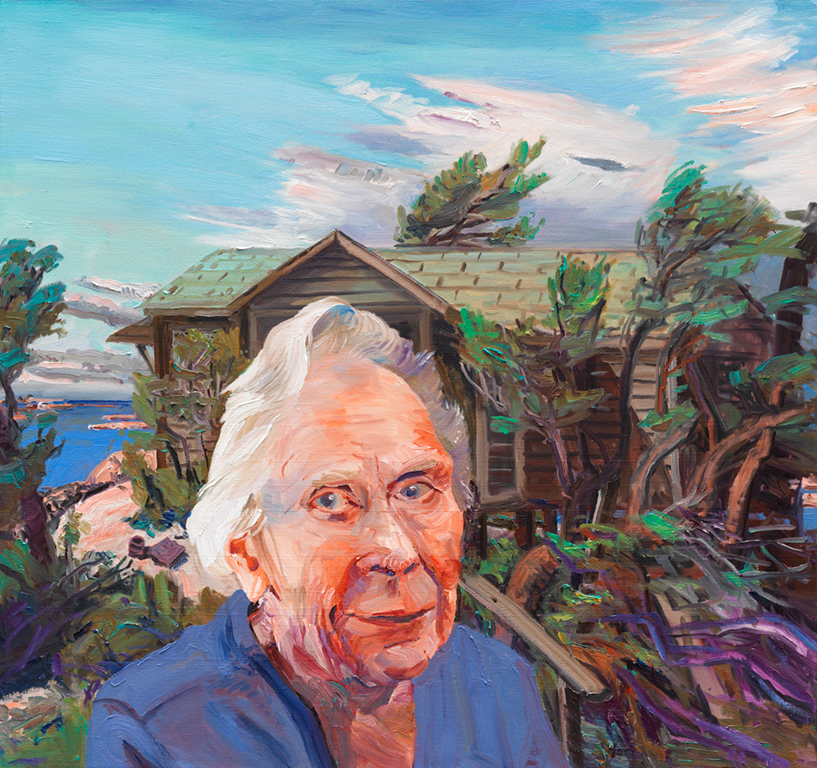 John Hartman: Ann MacIntosh Duff at Scotch Pine Island, 2, oil on linen, 34 x 36 inches. Image courtesy of Nicholas Metivier Gallery
John Hartman: Ann MacIntosh Duff at Scotch Pine Island, 2, oil on linen, 34 x 36 inches. Image courtesy of Nicholas Metivier Gallery
In the space between the rural North and the urban city, between dusk and twilight, and somewhere between indoors and outdoors, there exists ‘landscapes of the mind’ by Ann MacIntosh Duff. Nicholas Metivier Gallery presents works – some shown also at her Tom Thompson Memorial Art Gallery retrospective in 2007 – spanning six decades of Duff’s sincere paintings and woodcuts.
For as long as Duff has had two studios, she has spent spring and summer in Pointe au Baril, Georgian Bay, and the fall and winter seasons working from her Toronto home studio. Working in the North, Duff dips her paper into the lake to paint sweeping tree filled landscapes and star filled skies while her cityscapes pack signs and skyscrapers into a close foreground. Working only in natural light between dusk and twilight, Duff lays down her compositions quickly capturing not only those transient colours of day allowing the dimming light to inform her pallet, the speed in which she works allows for pathetic fallacy and a loose style.
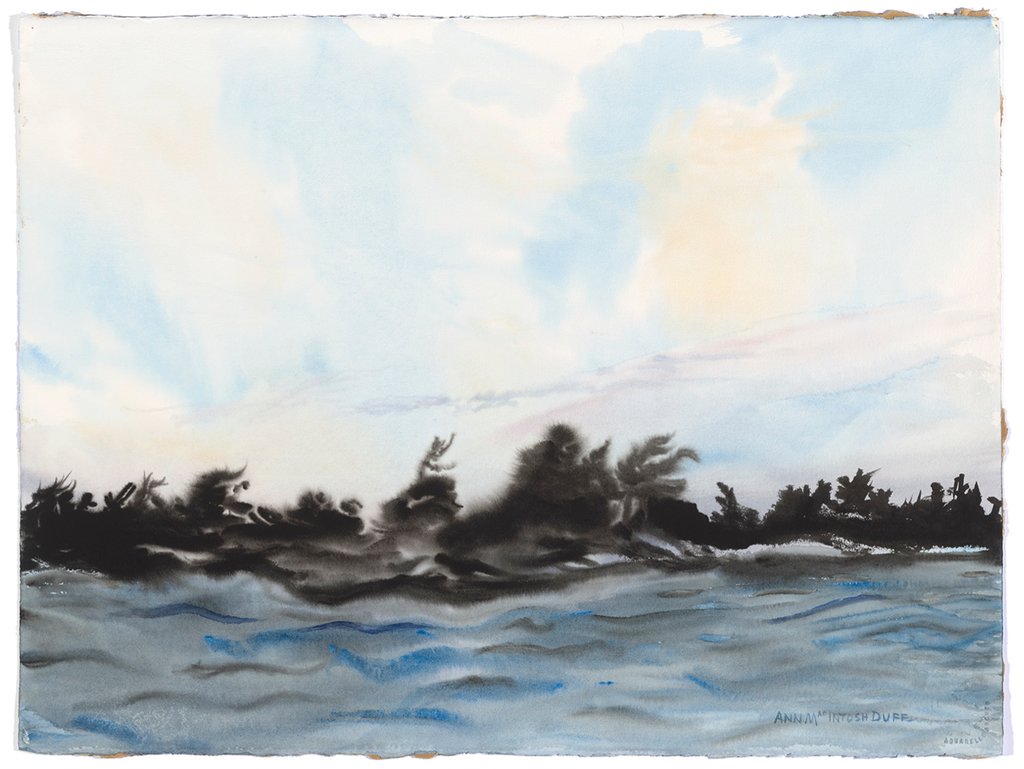 Ann MacIntosh Duff, Wind Clouds, watercolour on paper, 22 1/2 x 29 3/4 inches. Image courtesy of Nicholas Metivier Gallery
Ann MacIntosh Duff, Wind Clouds, watercolour on paper, 22 1/2 x 29 3/4 inches. Image courtesy of Nicholas Metivier Gallery
Duff’s still lifes often take place on tabletops or near windows with a sparse collection of objects arranged in no formal order. The objects are charming and seemingly anecdotal in their inclusion, but combined with Duff’s consistent sincerity of style they also feel imbued with personal signification. The places and times produced by Duff are painted from memory, from her experience of both forest and city, of darkening shadows – which she calls ‘the landscapes of the mind’ – achieved in the fluidity of the otherwise unruly medium of watercolour.
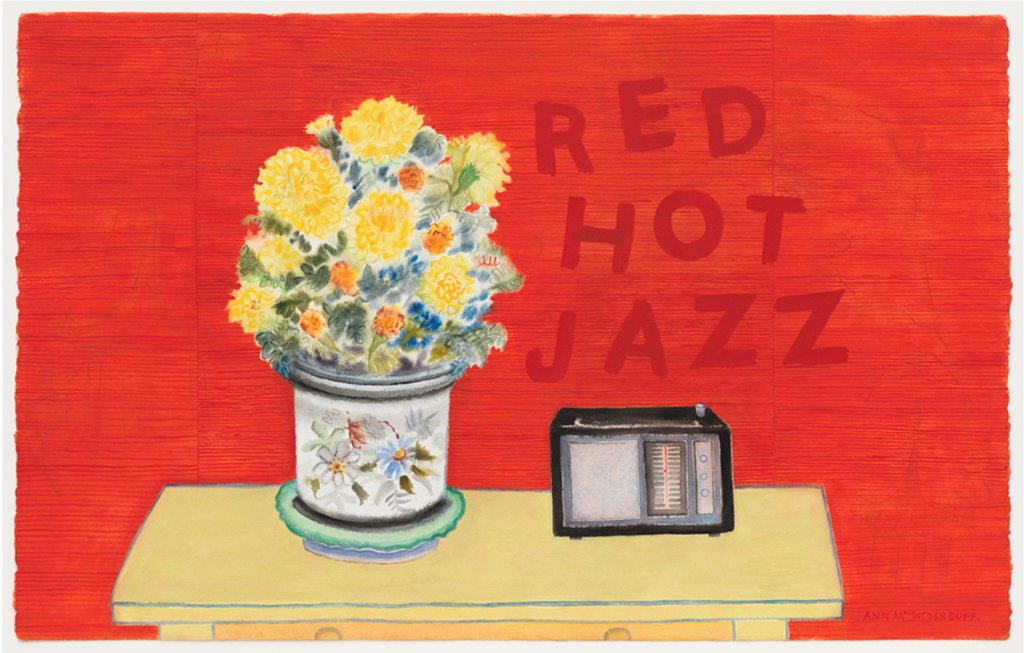 Ann MacIntosh Duff, Red Hot Jazz, 1989, watercolour on paper, 25 1/2 x 40 1/2 inches. Image courtesy of Nicholas Metivier Gallery
Ann MacIntosh Duff, Red Hot Jazz, 1989, watercolour on paper, 25 1/2 x 40 1/2 inches. Image courtesy of Nicholas Metivier Gallery
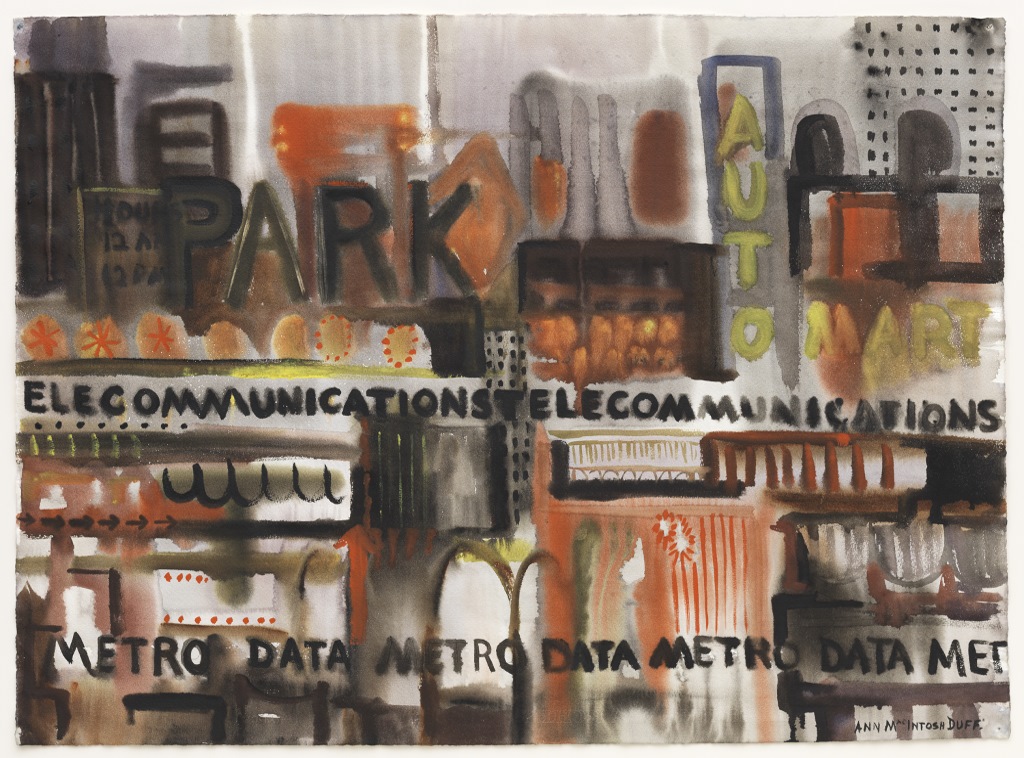 Ann MacIntosh Duff, Metro Data, 1965, watercolour on paper, 22 x 29 3/4 inches. Image courtesy of Nicholas Metivier Gallery
Ann MacIntosh Duff, Metro Data, 1965, watercolour on paper, 22 x 29 3/4 inches. Image courtesy of Nicholas Metivier Gallery
It is interesting then to consider the reoccurring symbol of the camera – a tool considered for some time to represent scientific documentation, a copy of the world/subject as it is – quite the opposite from a memory. If we now see the flaws in giving the photograph such power, allowing it to be a subjective representation, the camera as a symbol in Duff’s work feels like an object present in her life, but one unused in her painting practice.
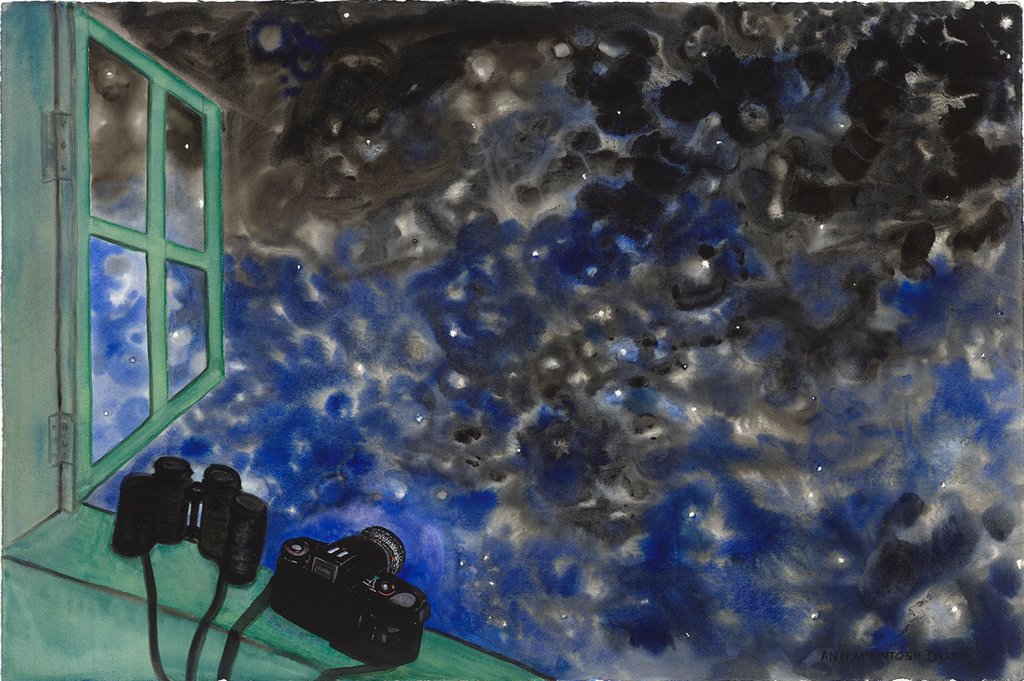 Ann MacIntosh Duff, Watching and Thinking, 2006, watercolour on paper, 26 1/4 x 39 1/2 inches. Image courtesy of Nicholas Metivier Gallery
Ann MacIntosh Duff, Watching and Thinking, 2006, watercolour on paper, 26 1/4 x 39 1/2 inches. Image courtesy of Nicholas Metivier Gallery
Historical and Contemporary artists with which Duff’s style has been compared include: David Milne (with whom she has exhibited), Peter Doig, and Annie Pootoogook. The heavy, carefully considered line of Milne’s coloured engravings can be seen in the bow of the boat in “Navigator”; Peter Doig’s patches of saturated colour might be gleaned from the few strokes composing dark trees in “Northern Evening”; and Duff’s still life compositions with strong outlines and solid planes of colour with emphasis on specific objects in “Red Hot Jazz” produce similar effects to Pootoogook’s coloured pencil drawings.
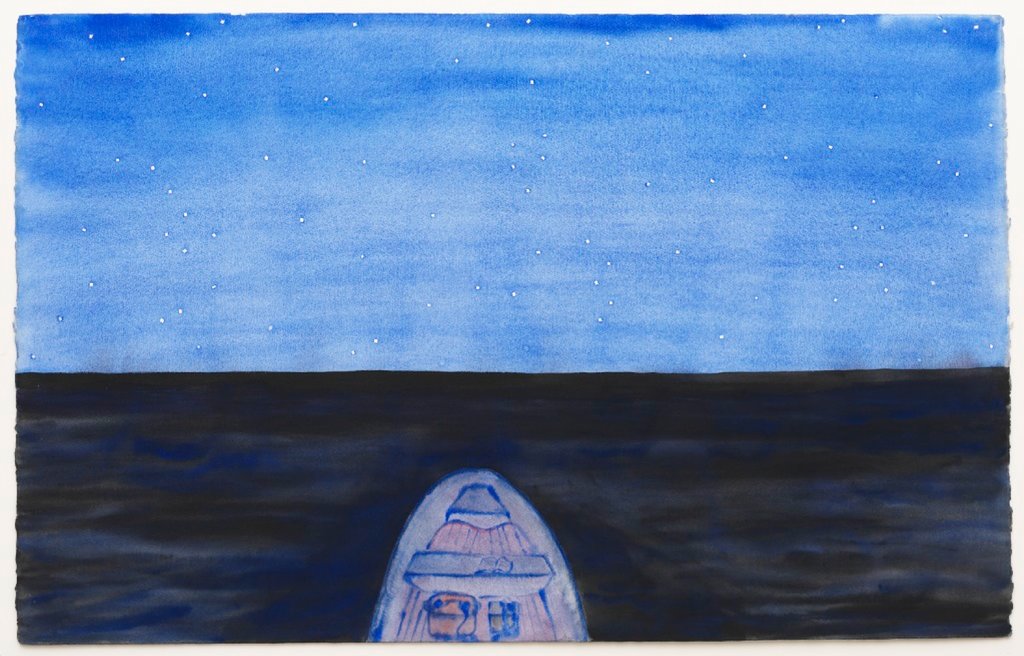 Ann MacIntosh Duff, Navigator, 1995, watercolour on paper, 25 1/2 x 40 1/2 inches. Image courtesy of Nicholas Metivier Gallery
Ann MacIntosh Duff, Navigator, 1995, watercolour on paper, 25 1/2 x 40 1/2 inches. Image courtesy of Nicholas Metivier Gallery
Making the natural connections in style between artists reveals that through Duff’s decades of practice her emotional experience of memory, translated through style has remained consistent. Shown at Nicholas Metivier Gallery, some decades of Duff’s work favor print making of northern scenes, some of boldly outlined tables, and other periods represent spectres of experiences, but each of the works communicates the sincere way in which Duff faces these experiences.
Alice Pelot
*Exhibition information: June 23 – July 16, 2016, 2016, Nicholas Metivier Gallery, 451 King Street West, Toronto. Gallery hours: Tue – Sat, 10 am – 6 pm.
